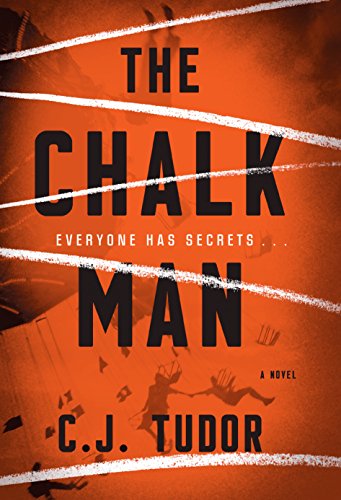 Once again,
I seem to be in the minority because my review of a book will not be like the
many, many glowing reviews it has received.
The Chalk Man is mediocre at
best, just a diluted version of Stephen King’s novella, The Body.
Once again,
I seem to be in the minority because my review of a book will not be like the
many, many glowing reviews it has received.
The Chalk Man is mediocre at
best, just a diluted version of Stephen King’s novella, The Body.
In The Body, a group of boys finds a dead
body and one of them, now an adult, narrates a retrospective of what happened; chapters
concerning the present are interspersed throughout. One boy struggles with the death of a
brother; one has older parents; one boy is abused by a father; one is
overweight; and the brother of one of the boys is the leader of a gang of bullies.
In The Chalk Man, twelve-year-old Eddie
Adams and three of his friends (Metal Mickey, Fat Gav, and Hoppo) find a body. Ed, thirty years later, narrates the story of
what happened; that story alternates between chapters set in 1986 and those set
in 2016. The friends are forced to re-examine the murder and other crimes that
were committed around that time. One boy
changes after the death of his brother; Eddie has parents that “were older than
other parents”; Nicky, also a member of the group, always has bruises and is
never seen “without a brown or purple mark somewhere; Fat Gav is overweight; and
Sean, the leader of an older group of bullies, is Metal Mickey’s brother. And these are just some of the similarities;
if I were still a high school English teacher, I might encourage a student to
write an essay comparing the two books!
The Chalk Man is full of plot weaknesses. There are so many coincidences; for example,
the many connections among various characters are incredible. In both the past and the present, characters
appear and take up residence in the town at the most opportune time. No one, not even an adult who should be well
aware of medical confidentiality, thinks about the possible serious consequences
of actions. The climax is over-the-top
and outlandish; it requires much too much suspension of disbelief. And then there’s the last box that Ed takes
with him at the end! Despite the book’s warnings
about “assuming”, any astute reader will know the contents of that box. But is the reader really supposed to believe
that Ed kept such a “treasure” and convinced himself he did it “To hold on to
something. To keep it safe”?!
The author
tried to create suspense but did so in amateurish ways, using certain
techniques over and over. For instance,
chapters often end with cliffhanger statements like “’I know who really killed
her’” and “The worst had finally come” and “Chloe was gone.” Ed often has nightmarish dreams (which he
calls “lucid dreaming”) that are supposed to add to the creepiness factor;
their repeated occurrence just becomes annoying. Some scenes which are supposed to be horrific
just don’t work. The fight at a funeral ends
up being unintentionally funny. And didn’t
Stephen King have exactly the same thing happen in Pet Sematary?
What also becomes
tedious is the many clichés that Ed spouts as wisdom. Are readers supposed to be amazed at the
profundity of statements like “Often, what comes with age is not wisdom but
intolerance” and “We’re all just pretending to be civilized, when, deep down,
we’re not” and “We all make mistakes. We
all have good and bad in us” and “We ask questions that we hope will give us
the truth we want to hear”?
Like chalk
drawings exposed to the elements, this book’s fame will not be long-lasting. Read Stephen King’s The Body or watch Stand by Me,
the film adaptation, instead.
Totally agree. There is also a goof: who drew the chalk man with the chalk dog after Sean’s funeral if Murphy was not murdered?
ReplyDelete